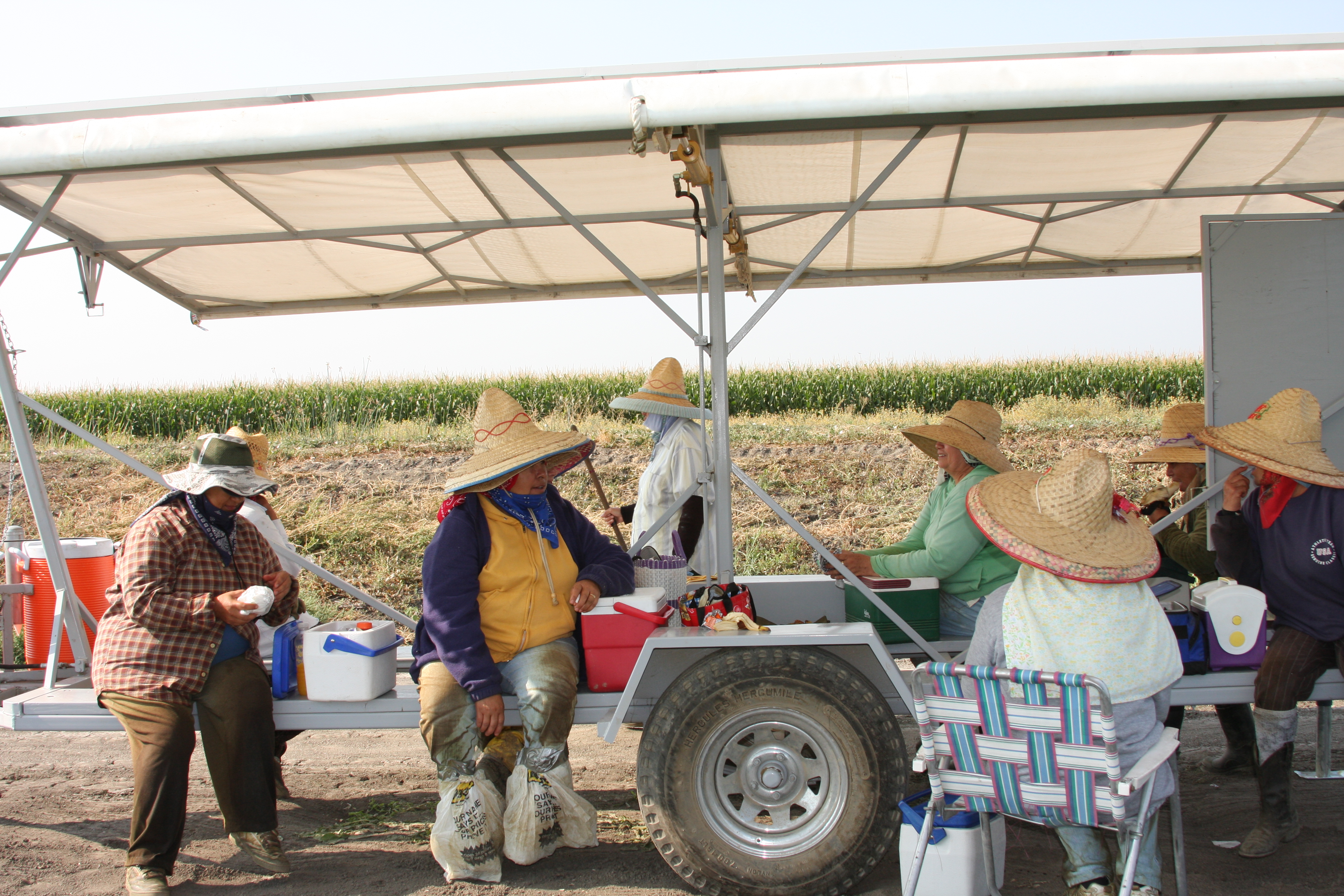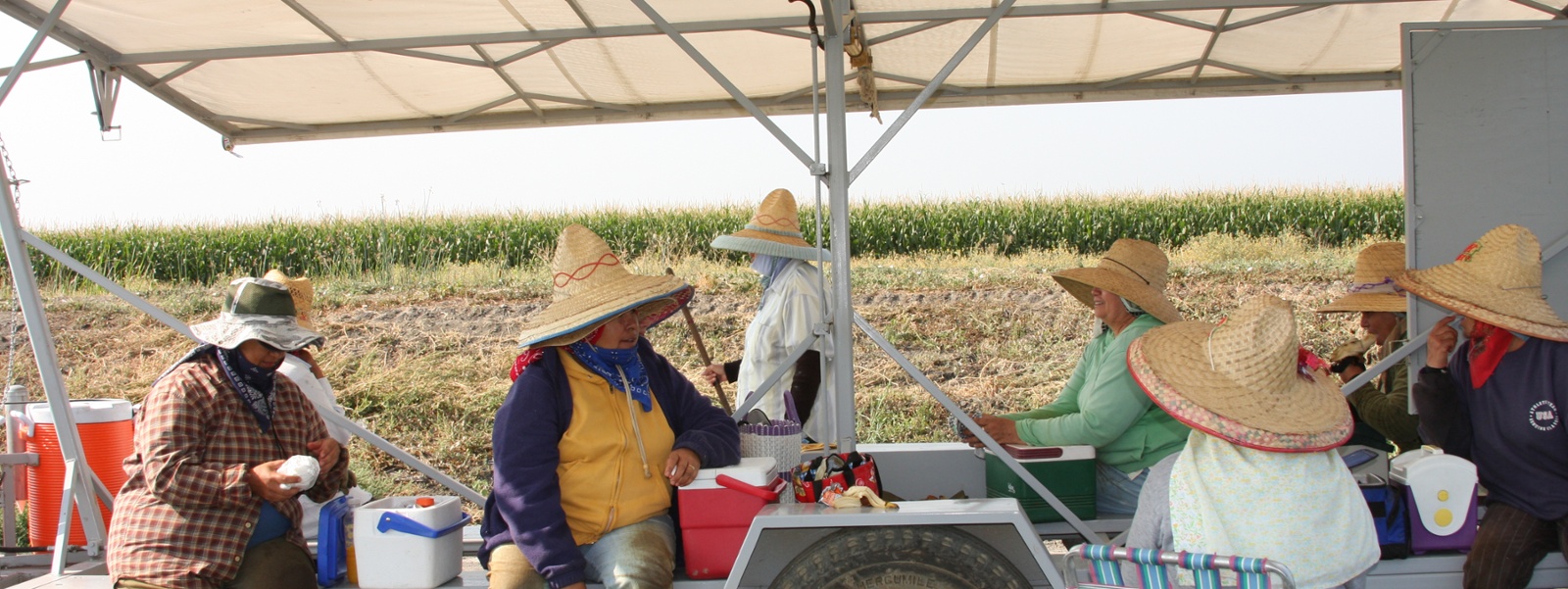Commentary: As heat rises, protecting farm employees is critical

A shade trailer and ample supplies of water help protect agricultural employees from summer heat. California’s Heat Illness Prevention Standard requires careful monitoring for heat-related dangers.
Ag Alert File Photo


By Bryan Little
After a long, cool, wet spring gave way to a scorching heat wave last weekend, California agricultural employers should be bracing for the hot summer throughout our state.
Protecting your employees from heat illness and being ready for compliance with the California Division of Occupational Safety and Health’s Heat Illness Prevention Standard should now be an important focus for California farmers. With temperatures rising, it is particularly important to pay attention to acclimatization—the process for your employees to acclimatize themselves to the heat.
Nearly two decades after adoption of the nation’s first heat illness prevention regulation for outdoor workers, California farm employers have done a good job protecting employees from heat hazards. The most common heat illness prevention violations seem to be a failure to have a copy of the required written program at each work site. Citations for failure to provide water or shade—the key components of a heat illness prevention program—are rare.
California’s regulation was adopted in 2005 and has been updated periodically as we learn new information about how to best protect outdoor employees from the effects of heat. The U.S. Occupational Safety and Health Administration, now led by former Cal/OSHA Chief Doug Parker, is also looking at a federal standard covering states that don’t operate a state occupational safety and health program as California does.
There are several important things agricultural employers should keep in mind as temperatures ramp up. Early in the summer, be particularly careful to pay attention to acclimatization of employees who are not accustomed to hot weather. According to Cal/OSHA, people best acclimatize when they work in hotter weather for at least two hours for four to 14 days. The heat illness prevention standard requires unacclimatized employees to be closely observed for 14 days when temperatures increase or employees shift from a cooler work site to a hotter one.
Consider shifting the workday to start earlier in the morning and finishing before the hottest part of the day. Earlier sunrises in the summer months can make this easier. Make sun shade available on demand when the temperature is below 80 degrees and provide shade at all times when the temperature exceeds 80 degrees. Shade also must be provided to all employees on a rest or meal break, except those who choose to take a meal break elsewhere.
Shade also must be easy for employees to reach without encountering obstacles or hazards or unreasonably unpleasant conditions. Hanging a tarp on the back of the trailer carrying portable toilets will certainly attract a citation from Cal/OSHA. Be sure to use “easy-up” portable shades, awnings or shade trailers, a distinctly Californian innovation.
Fresh, pure and suitably cool water must be made available in sufficient quantities. Replenishment through plumbed water supplies or refilling of portable water coolers is permissible as long as employees in the field are never left without any water.
Water must be made available to employees “as close as practicable” to their work, though interpretations of the Cal/OSHA rule have shifted. For example, the agency does not view placement of water that requires employees to move between rows of grapevines to be “as close as practicable.”
Employees must be trained about heat exposure and the heat illness prevention standard. Supervisors must be trained in heat illness prevention compliance procedures, employee monitoring, emergency responses and ensuring effective communication to facilitate emergency response. A written copy of your heat illness prevention program in English and the language understood by the majority of employees must be made available to workers and Cal/OSHA inspectors.
Have an emergency plan should someone experience heat illness. Have contingency plans for cellular service or radio communication. Summon emergency service providers and ensure they can find your work site if you’re in a remote area. Determine who will be prepared to render first aid and who will remain with the sick person at all times.
It’s also crucially important to remember that when temperatures exceed 95 degrees, employers must implement “high-heat” procedures, including mandatory 10-minute breaks every two hours. Meal and rest periods can serve as breaks. But if employees work beyond eight hours or waive meal or rest periods, employers must ensure mandatory rest breaks occur.
California Farm Bureau’s affiliated company, Farm Employers Labor Service, or FELS, furnishes training resources, including our heat illness training video, tailgate training resources and a water cooler sticker reminding employees to drink water and rest in shade periodically. Heat illness training for employees and supervisors is provided by bilingual, bicultural FELS labor management consultants. You can get more information at fels.net.
(Bryan Little is director of employment policy for California Farm Bureau and chief operating officer of Farm Employers Labor Service. He may be contacted at blittle@cfbf.com.)




